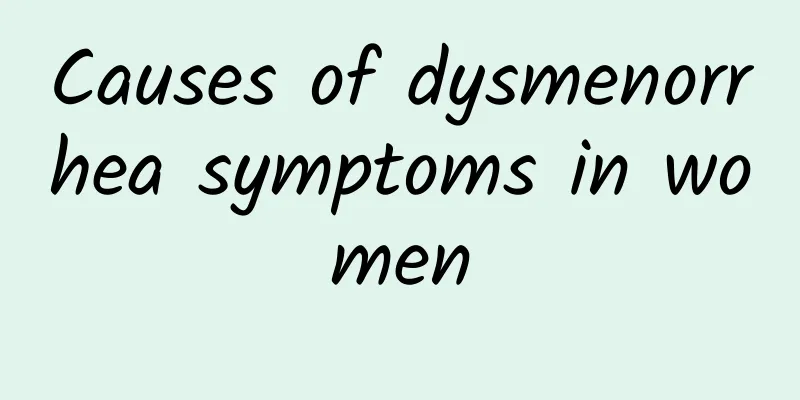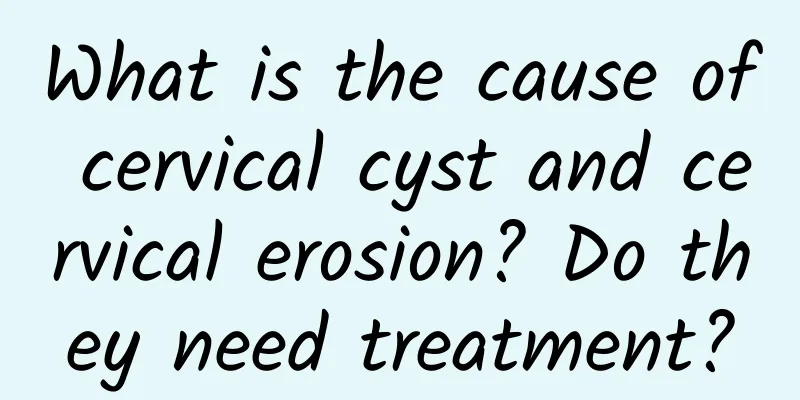What are the clinical manifestations of functional uterine bleeding?

|
What are the clinical manifestations of functional uterine bleeding? You may be unfamiliar with the phenomenon of functional uterine bleeding in life, but it is a common gynecological disease with a high clinical incidence rate, which can cause female infertility. Therefore, we need to know more about this disease to prevent unnecessary harm. Let's take a look at the clinical manifestations of functional uterine bleeding. 1. Anovulatory functional uterine bleeding is divided into two groups according to age. (I) Dysfunctional uterine bleeding in adolescence: It occurs in girls after menarche. It is caused by the immaturity of the HPOU axis and the inability to establish regular ovulation. Clinical manifestations include infrequent menstruation after menarche, irregular menorrhagia after a short period of amenorrhea, prolonged menstruation, and continuous bleeding, leading to severe anemia. (ii) Menopausal (perimenopausal) functional uterine bleeding: that is, functional uterine bleeding in women aged ≥40 years to around the time of menopause, during which the incidence of anovulatory functional uterine bleeding increases year by year. Clinical manifestations include: frequent menstruation, irregular cycles, excessive menstrual flow, and prolonged menstruation. 10-15% of patients present with severe irregular menstruation, metrorrhagia, and severe anemia. Endometrial biopsy often shows varying degrees of endometrial hyperplasia, so curettage is necessary, and special attention should be paid to excluding non-functional uterine bleeding caused by gynecological tumors (uterine fibroids, endometrial cancer, ovarian cancer, cervical cancer). 2. Ovulatory functional uterine bleeding is most common in women of childbearing age, and is also sometimes seen in adolescent girls and menopausal women. It is clinically divided into the following types: 1. Ovulatory oligomenorrhea: seen in adolescent girls. After menarche, the follicular phase is prolonged, the luteal phase is normal, the cycle is ≥40 days, and the menstruation is oligomenorrhea. It is often a precursor to polycystic ovary. It is rare in menopausal women and often progresses to natural menopause. 2. Ovulatory frequent menstruation: The ovaries of adolescent girls are more sensitive to gonadotropin, which accelerates the development of follicles, shortens the follicular phase, and causes frequent menstruation, but ovulation and luteal phases remain normal. If the patient is a menopausal woman, both the follicular phase and the luteal phase are shortened and early menopause occurs. (II) Luteal dysfunction 1. Luteal insufficiency: premature luteal degeneration, shortened luteal phase ≤ 10 days. Clinical manifestations include frequent menstruation, shortened cycle, premenstrual bleeding and menorrhagia, combined with infertility and early miscarriage. Endometrial pathology is irregular maturation or incomplete secretion. 2. Incomplete luteal atrophy: also known as prolonged luteal function, that is, the corpus luteum cannot completely degenerate within 3 to 5 days, or the degeneration time is prolonged, or a certain amount of progesterone continues to be secreted during the menstrual period, resulting in irregular endometrial shedding. Prolonged menstruation, continuous bleeding, and premature luteal degeneration will manifest as frequent menstruation and menorrhagia. It is more common in patients with uterine fibroids, endometrial polyps and adenomyosis after artificial abortion or induced labor. 3. Mid-menstrual bleeding is also called ovulation bleeding. It is often accompanied by ovulation pain, which is caused by ovulation stimulation and estrogen fluctuations, causing a small amount of bleeding (1 to 3 days) and abdominal pain. In some cases, the bleeding is more severe and continues until the menstrual period, forming frequent pseudomenstruation. Patients should combine work and rest in their daily life, avoid heavy physical work and strenuous activities, get enough sleep, be in a good mood, and eat more fresh fruits and vegetables rich in vitamin C, such as spinach, rapeseed, cabbage, tomatoes, carrots, apples, pears, bananas, oranges, hawthorns, fresh dates, etc. These foods are not only rich in iron and copper, but also contain folic acid, vitamin C and carotene, which have a good effect on treating anemia and assisting in hemostasis. |
<<: How to check for amenorrhea
>>: What are the dietary treatments for vulvar leukoplakia
Recommend
Love text? Golden Glory? Jade text? I love eating mangoes but I’m afraid of getting fat. Which one has lower calories?
The mango season is here, and different varieties...
Dietary considerations for pelvic peritonitis
It is not terrible to suffer from pelvic peritoni...
Women with cervical erosion are prone to these 3 symptoms
In life, many women are troubled by cervical eros...
What are the causes of bacterial vaginosis?
In recent years, the incidence of bacterial vagin...
Symptoms of early pelvic inflammatory disease
Pelvic inflammatory disease is a common gynecolog...
Can progesterone treat amenorrhea?
Progesterone , also known as progesterone, is a p...
Early symptoms of cervicitis
Experts from our hospital said that early detecti...
Moxibustion treatment of cervical erosion
Generally speaking, cervical erosion will not hea...
14 bowls of braised pork rice in one meal! Fat man loses 40 kg after surgery
Morbid obesity is not only a disease, it may also...
How much does an abortion cost?
If you choose to have an abortion for an unexpect...
Commonly used drugs for endometrial tuberculosis
In daily life, women should pay attention to the ...
What are the minimally invasive treatments for uterine fibroids?
Minimally invasive treatments for uterine fibroid...
Why can't you eat taro if you have uterine fibroids? Can you eat taro if you have uterine fibroids?
Why can't people with uterine fibroids eat ta...
Will cervical erosion recur after surgery?
Will cervical erosion recur after surgery? If the...
Is physical therapy for cervical erosion extremely painful?
Is physical therapy for cervical erosion extremel...









